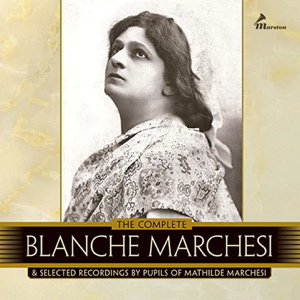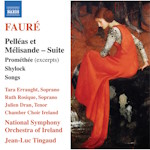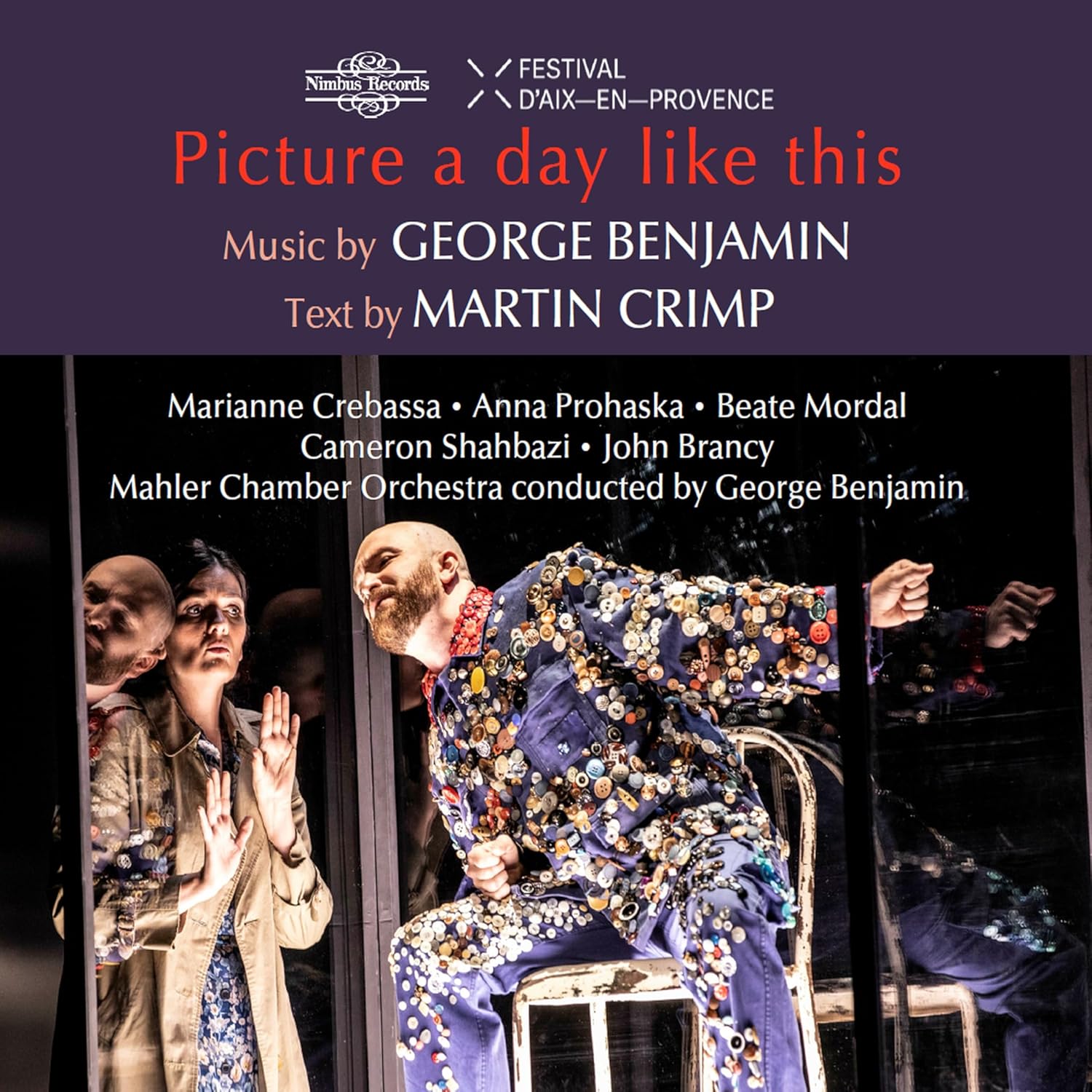
Blanche Marchesi (soprano)
The Complete Blanche Marchesi
Selected Recordings by Pupils of Mathilde Marchesi
Esther Palliser, Suzanne Adams, Frances Saville, Elizabeth Parkina (sopranos); Ada Crossley (contralto)
rec. 1902-1937
Full matrix and catalogue discographic data and extensive notes included
Marston Records 52079-2 [2 CDs: 162]
The Marchesi school of singing had some impressive alumnae. Mathilde Marchesi, née Graumann, supported by her husband Salvatore, had already trained some big-name sopranos before her move full time to Paris in 1881. When a certain Australian named Nellie Armstrong walked into her studio on the Rue Jouffroy in 1886 and started to sing “Ah, fors’è lui” from La Traviata, Mme Marchesi jumped up and ran up the stairs shouting “Salvatore viens, viens Salvatore… J’ai enfin une étoile!”. Her student, renamed Melba was her greatest success but in this record from the Marston label we hear her own flesh and blood, Blanche Marchesi alongside some other artists steeped in the tradition of bel canto passed down from Manuel Garcia through the teaching of Mathilde Marchesi. Many of the records are exceedingly rare and are making their first appearance here in transfers that are honest, unobtrusive and accurately pitched.
Blanche Marchesi (1863-1940), Mathilde’s youngest child, made her debut performance in a matinée musicale at her own home accompanied by Charles Gounod. She married well and sang mainly in society circles until a great success in London in 1895 encouraged her to take her talent on to another level. She sang opera on stage from 1900-1903 but did not make a huge impression. Covent Garden engaged her only in the less fashionable Autumn season. Melba ruled supreme at the Garden and Blanche always felt her career there (and on record) was scuppered by the machinations of the great Australian diva. “Poor Blanche”, as Melba allegedly called her, made a small number of acoustics for The Gramophone Company in 1906, then a later series of electrics, made by HMV for smaller-scale distribution in the mid-1930s by which time Blanche Marchesi was approaching her mid-70s.
In the seven G&Ts we hear the vocal method advocated by Mathilde Marchesi at its zenith. The voice placement on the breath is perfection and her technique is immaculate. She was 42 and her voice is pure of tone, her trill a thing of wonder. My favourite records of this early set are Im Mai (which was selected to represent her in the legendary EMI compendium The Record of Singing) and L’été, which although fast, shows off her coloratura to dazzling effect. The records, made in Berlin were issued single-sided but, like Emmy Destinn’s of similar vintage and provenance, may have been quickly doubled up. Ward Marston tells me they are impossibly rare and cannot have been available in the catalogue for very long.
Ward Marston and his worldwide fraternity of helpers have unearthed more rarities including a test side she made for the Columbia company in 1912 (and very nice it is too, actually) and two privately made recordings from 1934. The seven sides she made electrically, however, in London in 1936/7, are better known. By now she was in her 70s and takes more breaths than she used to. Her voice is still under total control, however, and her phrasing often exquisite. Her pianissimos are especially noteworthy and one can sample them on her very last record (a rare 12-inch specimen) with the aria from Hercules on one side and songs by Hugo Wolf and Ernest Moret on the other. What sweetness of tone in the Handel aria, what diction and sincerity. She made two versions of “When I am laid in Earth” a few months apart, as she was so unhappy with a phrase she had laid down on the first take. The wonderful notes to this CD tell the tale but do not specify the phrase in question. I happen to have a copy of The Record Collector from 1992 where the discussion emerged and can confirm it is in the recitative at “but death invades me”. The collector, Jeffrey Miller in that article asserts that rather than being a problem the original phrase sends shivers down the spine of the listener such as to impress this version on his/her memory for ever. I completely agree. Both versions of the Purcell aria are unique and should be heard by all connoisseurs of true vocal art. Another record from these sessions that simply demands to be heard is the Sicilian Cart Driver’s Song. This one might surprise you a bit, if you’ve never heard it before.
Esther Palliser (1868–?) was a favourite of Sullivan and D’Oyly Carte who presented her in The Gondoliers and entrusted her with a creator role in Ivanhoe. She made some records for The Gramophone Company at the time they were making their famous London Reds series in 1902. Palliser’s few discs were released on the cheaper black label though and did not sell well. Marston present five elusive sides which are recommendable really only to specialist collectors.
The famous series of red label G&Ts made in London in 1902 contained, amongst gems by Pol Plançon, Emma Calvé, Antonio Scotti and others, five titles by the American soprano Suzanne Adams (1872–1953). She had studied at the Ecole Marchesi and was coached personally in the roles of Marguerite and Juliette by Gounod himself. She made her debuts (always as Juliette) in Paris, Covent Garden and the Met in 1895, 1898 and 1899 respectively. Despite the presence at this time of singers of the stature of Melba, Eames, Sembrich and Calvé; Adams was riding high in the world of opera as the new century dawned. Her career did not last long, though, and by 1904 she was in decline. Apart from these ultra-rare G&Ts she made some records in the US for Columbia in their legendary 1903 Grand Opera series. Her voice is captured in these records in its prime. It is a beautiful pure instrument and is equalised throughout its range with no breaks in registers. The Marchesi method is in evidence again with high notes projected out with brightness and brilliance. The two sides featuring the arias from Faust and Roméo et Juliette will attract the most attention, I expect.
The lyric soprano Fanny Saville (1865–1935) had a major operatic career beginning with her debut at the Monnaie as Juliette in 1895 and ending with retirement from Mahler’s Hofoper in Vienna in 1903. As well as the lighter Gounod roles, Violetta, Lucia, Manon she also sang heavier roles such as Leonora in Il trovatore and Desdemona as well as Wagner in Vienna and at the Met. She often sang with such giants as Tamagno and Jean de Reszke. Marston present the twelve records she made in Vienna in 1902 split evenly between operatic and song repertory. Saville was an endearing singer with an attractive refined tone. My favourite titles would have to be the Manon “Obéissons” and “Maman, dites-moi” a delightful French song. In the song “Ninon” by Tosti, she displays such purity and elegance. Her legato is just wonderful. I would love to own this disc in an original copy. With zero chance of that ever happening however, I am going to cherish this transfer.
The final side in the selection is “Morgen send’ ich dir die Veilchen” by Erik Meyer-Helmund. This piece really shows off the middle and lower registers of Saville’s voice. She must have been a delight to hear live and I was glad to be reminded of her in listening to these discs. I hadn’t heard them since Symposium included them in their Harold Wayne Collection. That is going back some years now and I imagine the CDs would be difficult to source for any new buyer.
Another American singer here exhibited by twelve sides, all songs from 1904 and 1906, is Elizabeth Parkina (c.1878–1922). She had a small but perfect voice. She was mentored after leaving Marchesi by Melba, who presented her as Musetta to her own Mimi at Covent Garden from 1904. Singing this role often with Caruso, Scotti and Melba up to 1907 she was heard and respected by many. She never seems to have sung any of the starrier parts, however, like Violetta, Gilda or Lucia (not even in the Autumn seasons) and her career petered out after 1907. “The little grey linnet” by Willeby on a black label G&T shows off her trill. The next song “When you speak to me” by d’Hardelot gives us another masterclass in the bel canto method. Her voice is youthful, translucent and of the purest timbre. The high notes are radiant and the enunciation is spot on.
All Parkina’s songs included here are of the highest quality and the transfers superbly achieved. I probably derive more pleasure from listening to these records than any from the others in this set.
Australian contralto Ada Crossley (1871–1929) was already an accomplished singer when heard by Melba and packed off to the Marchesi residence in Paris for polishing. She mainly concertized and worked the oratorio circuit, but at the highest level, singing with Patti, Nordica and at the invitation of Queen Victoria. Her four discs recorded in America for Victor in 1903 were a discographical first for the company. “Caro mio ben” is austere and a little too staid for my liking but one has to appreciate the control she has over her formidable resources. Her happiest record would have to be the Hahn song “Paysage”. Back in London she made a few more records for Pathé which include a number from St. Paul by Mendelssohn, the only souvenir we have of this great oratorio singer in the genre.
If you are interested in singing you really should know Mathilde Marchesi and her pupils. I would recommend starting with Emma Eames, Selma Kurz and of course if you don’t already have her records, the great Nellie Melba (I envy the novice who hasn’t heard Melba for the joy they will surely gain when they discover them). By all accounts Mme Marchesi could be a demanding teacher. Eames once described her as a Prussian drill master. I love the story, recounted in Michael Scott’s The Record of Singing, of how once a month a vase would appear on the lid of her piano, into which students were required to slip their fees. Madame affected a total lack of interest in this – unless, that is, one of her students omitted to do so…
Ward Marston, I know in this release has laboured on a project that is clearly close to his heart. Many of these titles did appear on those Symposium CDs that presented the Harold Wayne Collection. The authentic transfers there are not out of date but when I compare like-with-like this new Marston edition is even better. There are titles that not even Symposium could find here, too. The notes (Michael Aspinall) and discographical material are superb, as is usual from this source. This is a set to cherish and perhaps inspire a journey for some into these voices from another age.
Philip Harrison
Availability: Marston RecordsContents
CD1
Blanche Marchesi (1863–1940)
1 Bist du bei mir (Gottfried Heinrich Stölzel, arranged by J. S. Bach BWV 508)
2 Im Mai (Goldschmidt)
3 Eiapopeia (German folk song)
4 CAVALLERIA RUSTICANA: Voi lo sapete (Mascagni)
5 TOSCA: Vissi d’arte (Puccini)
6 L’été (Chaminade
7 Se saran rose (Arditi)
rec. 1906, Berlin
8 Zauberlied (Magic Song) (Meyer-Hellmund
rec. 1912, London
9 Le violette (A. Scarlatti)
10 Qual farfalletta amante (A. Scarlatti)
rec. 1934, London
11 O death, rock me asleep (anonymous, formerly attributed to Queen Anne Boleyn; arranged by Arnold Dolmetch)
12 DIDO AND AENEAS: Thy hand, Belinda … When I am laid in earth (Purcell)
13 DIDO AND AENEAS: Thy hand, Belinda … When I am laid in earth (Purcell)
14 Amuri, Amuri [Sicilian Cart Driver’s Song] (traditional; arranged by Geni Sadero)
15 Maria Wiegenlied (Reger)
16 Sne (Snow) (Sigurd Lie)
17 Nun wander, Maria from SPANISCHES LIEDERBUCH, GEISTLICHE LIEDER (Wolf)
18 La lettre (Ernest Moret)
19 HERCULES: My father … Peaceful rest (Handel)
rec. 1936/7, London
Esther Palliser (1868–?)
20 XERXES: Ombra mai fu (Handel)
21 Bolero (Saint-Saëns)
22 The sweetest f lower that blows (Hawley)
23 Mighty lak’ a rose (Nevin)
24 Spring (Henchel)
25 La folletta (Marchesi)
rec. 1902, London
Suzanne Adams (1872–1953)
26 FAUST: Jewel Song (Gounod)
27 ROMÉO ET JULIETTE: Je veux vivre (Gounod)
28 Coquette (Stern)
29 Home, sweet home (Bishop)
30 Home, sweet home (Bishop)
CD2
1 Printemps nouveau (Vidal)
rec. 1902, London
Frances Saville (1865–1935)
2 LOHENGRIN: Euch Luften, die mein Klagen (Wagner)
3 MARTHA: Warum blühst Du, o Rose, im Garten allein? (Flotow)
4 MANON: Restons ici … Voyons Manon, plus de chimères (So bleib’ ich hier … So zeig’, Manon, den ernsten Willen) (Massenet)
5 MANON: Obéissons, quand leurs voix appelle (Folget dem Ruf, so lieblich zu hören) [Gavotte] (Massenet)
6 LES CONTES D’HOFFMANN: Les oiseaux dans la charmille (Phöbus stolz im Sonnenwagen) (Offenbach)
7 LES CONTES D’HOFFMANN: C’est une chanson d’amour qui s’envole (Hörst du es tönen) (Offenbach)
8 Maman, dites-moi (Old French Air)
9 Ninon (Tosti)
10 Heidenröslein D.257 (Schubert)
11 Wiegenlied, Op. 49, No. 4 (Brahms)
12 Ich hätte nicht daran gedacht (Meyer-Helmund)
13 Morgen send’ ich dir die Veilchen (Meyer-Helmund)
rec. 1902, Vienna
Elizabeth Parkina (c. 1878–1922)
14 Coming through the rye (traditional)
15 La villanelle (dell’Acqua)
16 Should he upbraid (Bishop)
17 Killarney (Balfe)
18 Ouvre tes yeux bleus (Massenet)
19 The little grey linnet (Willeby)
20 When you speak to me (d’Hardelot)
21 I know a lovely garden (d’Hardelot)
22 Mattinata (’Tis the day) (Leoncavallo)
23 La serenata (Tosti)
24 Spring (Tosti)
25 La fée aux chansons (Bemberg)
rec. 1904/6, London
Ada Crossley (1871–1929)
26 Caro mio ben (Giordani)
27 Four-leaf clover (Willeby)
28 Paysage (Hahn)
29 New Year’s Song (Mallinson)
rec. 1903, Philadelphia
30 Out on the rocks (Sainton-Dolby)
31 The gleaner’s slumber song (Walthew)
32 PAULUS: But the Lord is mindful of his own (Mendelssohn)
rec. 1905/6, London


















